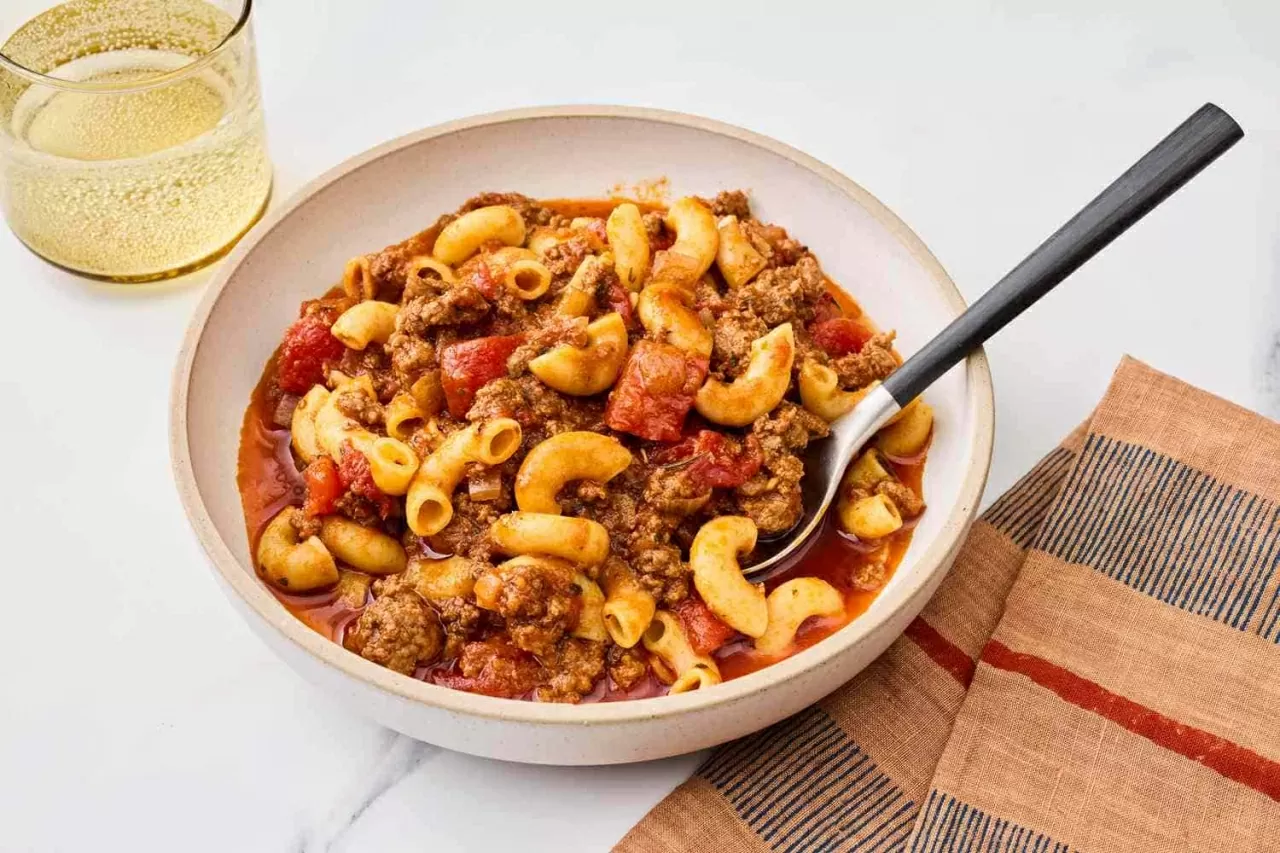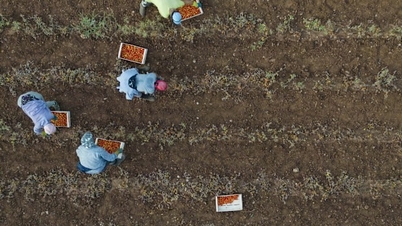Fondue (Switzerland)
In Switzerland, famous for its long tradition of cheese making, Fondue is considered a culinary symbol of winter.
Fondue is a mixture of melted cheese, usually Gruyère and Emmental, cooked with white wine and garlic, then served with cubed bread. The dish originated in the 17th century, when people in the mountains made use of cheese and dry bread during the cold season. However, Fondue only really became popular in Switzerland in 1930, when the country's Cheese Association launched a marketing campaign to promote the consumption of cheese-related products. Today, Fondue has become a popular dish in restaurants in Zurich, Geneva and the Alps.
At first, diners may not be used to the rich, thick taste of this cheese. But as soon as the cheese flavor begins to spread in the mouth, diners will feel the richness combined with accompanying spices such as garlic, pepper...
Fondue is also considered one of the easiest and most "fickle" cheese dishes, because the ingredients to make Fondue are extremely simple, mainly home-made ingredients. However, the process of making Fondue requires carefulness and meticulousness because this dish can easily become lumpy or burnt if the cook is not knowledgeable about cheese.
|
Fondue, often served with dry bread, is a favorite dish of many families in Switzerland in winter. (Source: Timtour) |
Goulash (Hungary)
Goulash is a famous Hungarian spicy stew made with beef, onions, paprika and potatoes. The dish originated with the Central European steppe herders (called gulyas ) over 700 years ago.
What makes Goulash special is the use of paprika - a red chili powder introduced from the Americas to Hungary in the 16th century.
From a rustic dish of nomads, Goulash has become a national culinary symbol of Hungary and gradually become popular throughout Central Europe with many different ways of preparation.
In winter, the rich and slightly spicy flavor of this dish helps warm the body, especially when enjoyed with bread or white rice.
|
Goulash is an indispensable dish at family parties and traditional festivals in Hungary. (Source: Allrecipes) |
Pierogi (Poland)
When traveling to Warsaw or Krakow in winter, especially on occasions like Christmas, visitors can easily find Pierogi in markets or family restaurants.
Pierogi or Pierogi Ruskie are steamed or fried dumplings filled with a variety of fillings, from mashed potatoes and cheese to meat or mushrooms. This is a traditional Polish dish, imported from Russia in the Middle Ages and adapted to the local taste.
Pierogi look similar to Chinese wontons in appearance. Pierogi's outer shell is made from unleavened wheat dough, and the filling can be sweet or savory, depending on the cook's preference.
Pierogi fillings are therefore quite varied, usually potatoes, fruits or salted fish. Poles are particularly fond of Pierogi filled with meat, mushrooms and cabbage. This dish has a mild flavor, is easy to eat and can be served as a main dish or a side dish.
|
Pierogi are considered the epitome of Polish rustic cuisine, with fillings ranging from savory (meat, salted fish) to sweet (fruit). (Source: Erin Jeanne McDowell) |
Coq au Vin (France)
When it comes to cold-season French cuisine, it's hard to ignore Coq au Vin, or the famous chicken stewed in red wine.
Originating from the Burgundy region, Coq au Vin is made by stewing chicken with red wine, pork belly and mushrooms for many hours to create a unique flavor. The dish was born from the traditional cooking practice of the local people, when the Burgundians took advantage of old roosters and available wine to create a stew with a soft, fragrant flavor.
Slow-cooked for hours, the chicken in Coq au Vin becomes tender, infused with the wine flavor and blended with the pork belly, mushrooms, shallots and garlic.
Le Monde newspaper described this dish as “representing the spirit of French family cuisine”, often appearing at winter dinners, bringing a feeling of warmth and closeness. Today, Coq au Vin is still a familiar choice on the menu of many traditional restaurants in Paris, Lyon or the Burgundy region.
|
The history of Coq au Vin is tied to a long tradition of cooking and using local ingredients in the Burgundy region of France. (Source: Good Food) |
Sauerbraten (Germany)
Sauerbraten, or sour beef stew, is one of the iconic dishes of German cuisine.
There are regional variations to this dish, but the traditional recipe involves marinating beef in a mixture of vinegar, red wine, onions, vegetables, and spices for several days before stewing. The long marinating process makes the meat tender, flavorful, and has a distinctive, slightly sour taste. The dish is often served with potato dumplings, red cabbage, or a thick brown sauce.
Sauerbraten is particularly popular in regions such as Cologne, Nuremberg and the Rhineland, with each region having its own unique seasoning, giving it its own unique character. In winter, the stew is often served in traditional pubs and at festivals.
After strolling around the colorful Christmas markets, enjoying a hot portion of Sauerbraten is considered the complete German experience, both rich and warm in the cold weather.
|
Sauerbraten is a typical German dish of sour beef stew, often enjoyed on cold winter days in traditional pubs. (Source: SURIG) |
Source: https://baoquocte.vn/5-mon-an-khong-the-bo-lo-khi-du-lich-chau-au-vao-mua-dong-333859.html









![[Photo] Unique architecture of the deepest metro station in France](https://vphoto.vietnam.vn/thumb/1200x675/vietnam/resource/IMAGE/2025/11/14/1763107592365_ga-sau-nhat-nuoc-phap-duy-1-6403-jpg.webp)

![[Photo] Unique art of painting Tuong masks](https://vphoto.vietnam.vn/thumb/1200x675/vietnam/resource/IMAGE/2025/11/14/1763094089301_ndo_br_1-jpg.webp)
![[Photo] Special class in Tra Linh](https://vphoto.vietnam.vn/thumb/1200x675/vietnam/resource/IMAGE/2025/11/14/1763078485441_ndo_br_lop-hoc-7-jpg.webp)






























![[Photo] Deep sea sand deposits, ancient wooden ship An Bang faces the risk of being buried again](https://vphoto.vietnam.vn/thumb/1200x675/vietnam/resource/IMAGE/2025/11/13/1763033175715_ndo_br_thuyen-1-jpg.webp)



































































![Dong Nai OCOP transition: [Article 3] Linking tourism with OCOP product consumption](https://vphoto.vietnam.vn/thumb/402x226/vietnam/resource/IMAGE/2025/11/10/1762739199309_1324-2740-7_n-162543_981.jpeg)





Comment (0)